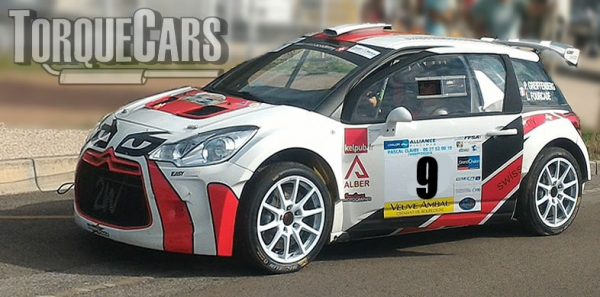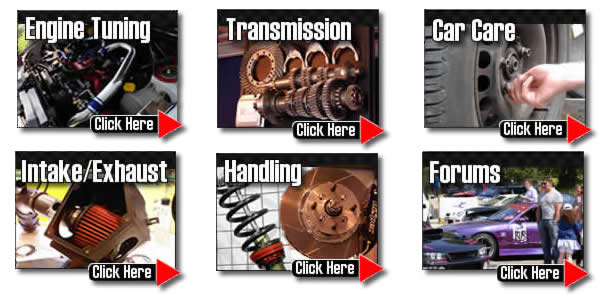Citroen DS3 Tuning
"Guide to DS3 modification"
The DS3 was launched in 2010 and received much praise from the motoring press. A DS3 racing model shows the potential of this great little chassis from Citroen.
Thankfully there are many engines in the DS3 range, 1.2 L 12v which feels a little underpowerd, the willing to rev 1.4 L 16v, it's bigger brother the 1.6 L 16v and a little after launch we saw a range topping 1.6 L I4 THP 16v turbo.
If you like torquey diesels then you should look to the, 1.6 L I4 HDI turbo-diesel. (HDI 90 FAP, HDI 110 FAP, Blue HDI 120 and the airdream versions from 2010)
All are quite peppy units but for modifications we would go for the 1.4 or 1.6 petrol (especially the turbo).
In 2016 Citroen released the 210hp turbo engine, which makes a great transplant project into the earlier cars.

We have seen some awesome DS3 tuning projects and there seems to be quite a loyal fan base of DS3 owners. We see people often wasting money on their DS3 doing the wrong mods and then having to start over. Follow our tips to avoid wasting your money

Handling/Suspension upgrades
Improving the handling for lots of DIY modders first priority in your DS3 tuning project.
Fully adjustable suspension allows you to fine tune the handling of you DS3 substantially improving your drive.
We suggest that you fit motorsport suspension and lower the car by 21mm - 36 mm. Larger drops require arch work - especially on models already equipped with performance suspension.
Turning our attention to the DS3s engine we need to get a bit more power out of the top end.
Sadly with smaller engine sizes you are wasting your time spending money on modifications, so if this applies to you get yourself an engine swap then apply the following mods.
Tuning modifications.
These mods sports parts are usually carried out by our members, decide how far you wish to go in your tuning project before you get going.
Here are the engines on offer as we write, with more being proposed offering more power and better economy.
- 1.2 L I3 12v 82 PS (60 kW; 81 hp) at 5,750 rpm
- 1.2 L I3 12v (from 2015) 110 PS (81 kW; 110 hp) at 5,500 rpm
- 1.4 L I4 16v 95 PS (70 kW; 94 hp) at 6,000 rpm
- 1.6 L I4 16v 120 PS (88 kW; 120 hp) at 6,000 rpm
- 1.6 L I4 THP 150/155 16v turbo 157 PS (115 kW; 155 hp) at 6,000 rpm
- 1.6 L I4 THP 207 16v turbo 207 PS (152 kW; 204 hp) at 6,000 rpm
- 1.6 L I4 THP 16v turbo (from 2016) 210 PS (150 kW; 210 hp) at 6,000 rpm
- 1.4 L I4 HDI turbo-diesel
- 1.6 L I4 HDI turbo-diesel 90-120ps (later years make more power, with hikes in 2010 2011 and 2014.
Engine swaps with later models are a good way to go if you have an older or base engine and want an easy power hike.
Getting the right uprated performance part upgrade kits for your planned usage of the car is vital. Stage 3 motor sport mods just don't work well on the road and will make the car undrivable.
Please watch our introduction Video tutorial to car tuning. Be sure to subscribe and support our new channel.
How to tune your car
- Improve the handling
Focus on Suspension improvements, such as coilovers and make sure the bushings are in good order and that the alignment is correct. Then focus on improving the brakes, with a big disk brake conversion kit and fast road brake pads.
- Remove restrictions
Focus on the intake and exhaust with filters being the common point of restriction in a tuned car. Intercoolers may also become restrictive on turbo engines so this may also need to be uprated.
- Burn more fuel & air
Increase the fuelling so it matches the air coming into the engine. The ratio is important so you need to improve the fuel pump and injectors, so the head mods, big valve conversions, fast road camshafts and forced induction upgrades extra supply of air is adequately met.
- Test and replace any weak parts
Weak areas are commonly the clutch, the turbocharger and pistons and crankshaft in a highly tuned engine. Makes sure these components will cope with your power aspirations.
- The Tune or Remap
A cars ECU controls the fuel, timing, spark and even the turbo in some cases, so to fully extract your gains you should remap the car last and this will fully release the power. Some cars are easy to map, and others require piggyback ECU's or aftermarket ECU's but this is the most vital step of your tuning project.
Modifying to Stage 1:
Remap, Panel air filter, Suspension upgrade (drop 30-40mm), Lighter flywheel, Alloy wheels, Sports exhaust.
Modifying to Stage 2:
Ported and polished head, Power/Sport clutch, Fast road cam, fuel pump upgrades, high flow fuel injector.
Modifying to Stage 3:
Internal engine upgrades (pistons/head/valves), Sports gearbox, Competition cam, Adding or upgrading forced induction (turbo/supercharger), Engine balancing.
Peak power is good on competition cars but for a daily driven car you need a wide power band and perhaps extending the rev range.
In this article we shall give your a good starting base to the best performance parts for your car, but we'd encourage you to spend some time on the site looking into the details of each type of performance mod.Fast road cams offer one of the biggest performance gains for your money as far as a single motorsport modifications goes on a NASP engine.
It improves the intake and exhaust flow and pushes up the power if done right. Ideally you'd add other mods and finish up with a performance chip. TorqueCars would caution you not to go with a motor sport cam as this upsets the engines idling and general town driving characteristics.When pushing up the power you will need to pay attention to to the fuelling. More power needs more fuel.
If you find you get flat spots and surges after your kits you should check the fuelling and try a higher octane fuel as well. Uprating the injectors is another beneficial modification and will deliver sufficient fuel. If you are increasing your fuelling with bigger injectors you will also need to get a bigger fuel pump to supply it.
Intake and Exhaust Tuning.
The next area for modification is the intake and exhaust. Contrary to popular belief there is often a small if any power gain to be had by fitting an induction kit, they only help and are recommended after you increase the engines power to the point where the standard air intake box cannot cope! Induction kits can work well on turbo engines and larger engines (if supplied with a suitable cold air feed or air box), generally though we'd just recommend for DS3 engines you should just fit a performance panel air filter preferably made from cotton.
Do not go with the biggest exhaust you can find this will reduce the exhaust flow rate - the best exhausts for power gains are usually between 1.5 to 2.0 inches on the turbo engines. It is the shape and material of the exhaust that matters more than the bore size.
Airflow through the head can be dramatically increased with some professional gas flowing. These should match and be setup to take into account any other engine mods. A 3 or 5 angle valve job will help improve torque and power low down.
Your clutch can lose you loads of power as the power goes up if it starts to weaken and the standard clutches are only ever good for power gains of up to 40%. Fit an uprated clutch to avoid power losses through the transmission.
Remaps offer massive power gains on all turbo charged cars. On NASP engines the benefits are doubtful. However a remap on a NASP engine will help unleash the potential if you have done a lot of mods.
We've also come across some owners experimenting with twin charging conversions and supercharger kits on the NASP engiens, and making some very high power figures.
Adding forced induction will see massive power gains but this is usually too expensive to be cost effective. Turbos are generally harder to add than a supercharger. It is difficult to map fuelling with a turbo as the boost comes on exponentially with engine speed.
Superchargers, however will give a boost which is proportional to engine speed so is easier to map. Adding forced induction will nearly always require a lower compression ratio or water injection.
Alloy wheel upgrades.
As alloys are lighter they improve performance and they can help to cool the brake disks. The downside to large alloys on your DS3 is that you're altering your final drive ratio and this will have a negative effect on performance.
Because of this we would advise sticking to a maximum wheel size of 16 inches, although we know some of our members have fitted larger 17 inch wheels with no problems the DS3 will suffer from tramlining and poor handling.
For more information on Tuning your car please join us in our friendly forum where you can discuss DS3 options in more detail with our DS3 owners. It would also be worth reading our unbiased Citroen tuning articles to get a full grasp of the benefits and drawbacks of each modification.
Please help us improve these tips by sending us your feedback in the comments box below. We love to hear what our visitors have got up to and which mods work best for them on each model of car. Comments are used to improve the accuracy of these articles which are continually updated.
If you liked this page please share it with your friends, drop a link to it in your favourite forum or use the bookmarking options to save it to your social media profile.
Check out TorqueCars new YouTube channel, and see their awesome new content...
Feedback
Please use our forums if you wish to ask a tuning question, and please note we do not sell parts or services, we are just an online magazine.
Help us improve, leave a suggestion or tip
